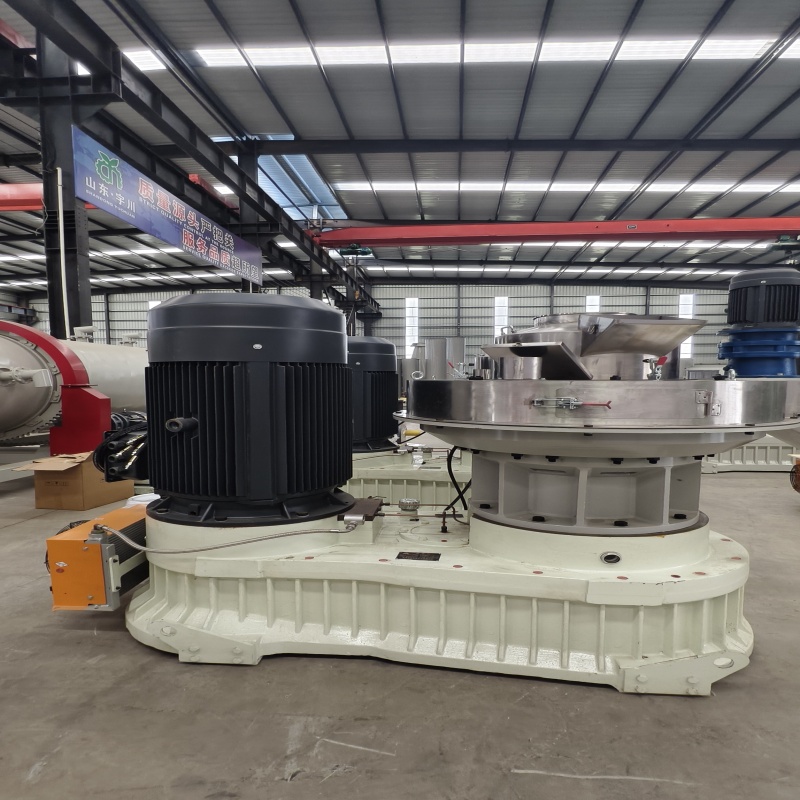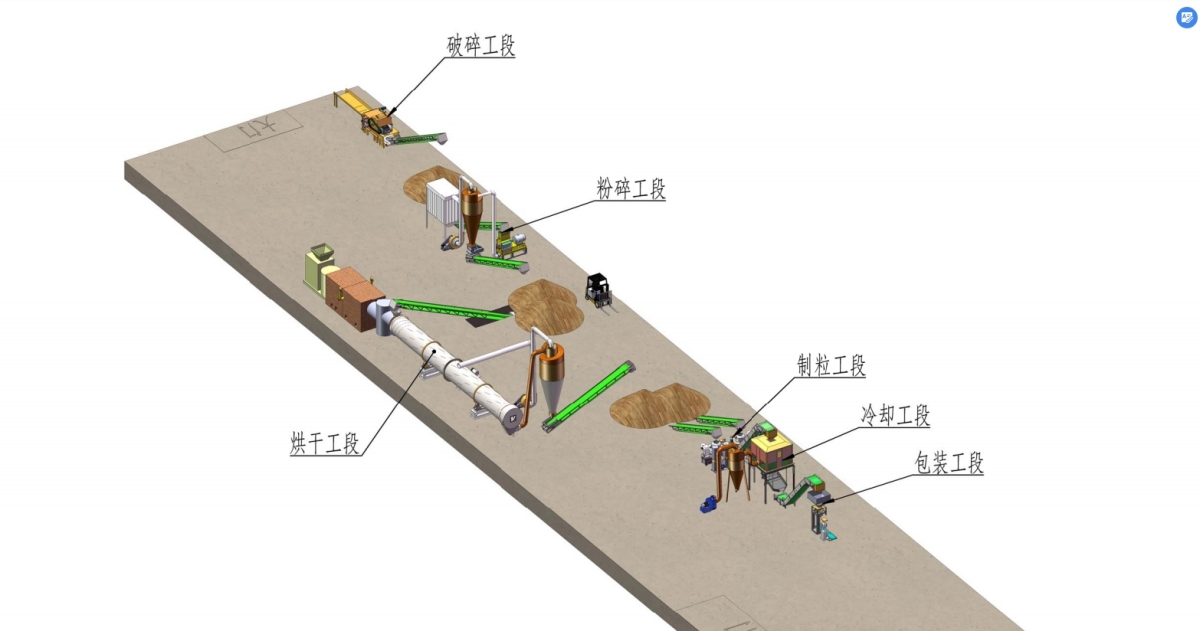Wood Pellet Production Line
Efficient production advantages
Outstanding production capacity
The standard model can process 1-5 tons of raw materials per hour (e.g. ring die 560 can handle 2-3 tons/hour)
Designed for continuous 24-hour operation, the daily output can reach up to 120 tons
High energy conversion rate
Raw material utilization ≥ 95%
The energy consumption per ton of material is only 80-100 kWh (15-20% energy saving compared with traditional equipment)
The biomass pellet production line is a complete set of equipment for processing agricultural and forestry wastes
(such as sawdust, straw, sawdust, etc.) into biomass fuel pellets with high density and high combustion efficiency.
The following is the core composition, process flow and characteristics of the production line:
First, the core equipment of the production line
Crushing system
Coarse crusher: process large pieces of raw materials (such as branches, wood chips) to below 50mm.
Fine crusher (hammer mill): further crush the raw materials to 3-5mm to meet the granulation requirements.
Drying system
Tumble dryer: reduce the moisture of raw materials to 10%-15% through hot air (the heat source can be natural gas, biomass burner, etc.) to ensure the molding effect.
Granulation system
Ring die pellet machine (core equipment): The raw materials after high-pressure extrusion and crushing are formed through the ring die holes to produce cylindrical particles with a diameter of 6-10mm.
Flat die pelletizer: suitable for small-scale production or soft raw materials (such as straw).
Cooling system
Counter-current cooling tower: Lowers particle temperature and removes surface moisture, preventing caking.
Sieving & Packaging Systems
Vibrating screen: Separation of debris from qualified particles.
Automatic Packing Machine: Weigh and pack (usually 25-50kg/bag).
Ancillary Equipment
Dust collection system (pulse dust collector): Handles dust in production.
Conveying equipment (belt conveyor, screw conveyor): Connecting each process.
Second, the process flow
Raw material pretreatment
Removal of impurities (metal, stone) → crushing → drying (moisture needs to be ≤ 15%).
Granulation molding
The raw materials enter the pellet machine through the feeder, and the lignin is softened and bonded under high temperature and high pressure, and extruded into shape.
Post-processing
Cooling → screening → packaging (or bulk storage).
3. Product features
High energy density: calorific value of about 3500-4500 kcal/kg, close to coal.
Environmental friendliness: zero net CO₂ emissions and low sulfur content.
Wide range of applications: used in boilers, power generation, home heating, etc.
Fourth, the production line configuration suggestions
Small line (1-2 tons/hour): suitable for farms or small processing plants, with an investment of about 50-1 million yuan.
Medium-sized line (3-5 tons/hour): It needs to be equipped with automatic drying and dust removal, with an investment of about 200-5 million yuan.
Large-scale line (more than 10 tons/hour): It is necessary to plan the raw material storage and logistics system, with an investment of more than 10 million yuan.
5. Precautions
Adaptability of raw materials: hardwood pellets are more durable, and adhesives need to be added to the straw.
Maintenance costs: Ring dies and pressure rollers are wearing parts that need to be replaced regularly.
Environmental protection requirements: Exhaust gas and noise treatment facilities need to be equipped to meet emission standards.
The biomass pellet production line has both economic and environmental benefits, especially suitable for areas with abundant agricultural and forestry resources.
The actual selection needs to be comprehensively evaluated according to the characteristics of raw materials, capacity demand and investment budget.
Model | YC560 | YC700 | YC850 | YC850 |
Main motor power | 132KW | 160KW | 250KW | 280KW |
Production volume | 1.5-2T | 2-2.5T | 3.5T | 4T |










